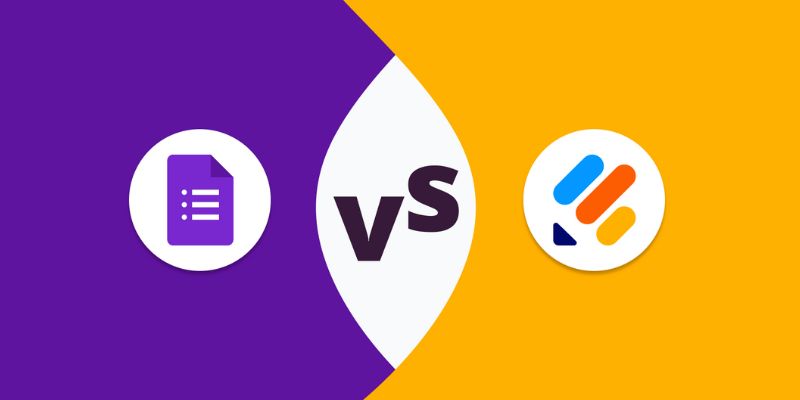Asana vs. Basecamp: Find the Best Fit for Your Projects in 2025
Advertisement
Without the appropriate technology, managing projects in 2025 is more difficult; teams require clever, basic systems to be effective. Two well-liked options with varying styles are Asana and Basecamp; Asana provides thorough work tracking while Basecamp maintains simplicity and calm. Your workflow will determine your preferred choice, whether you want a no-fuss system or organization and deadlines.
Showing which tool fits teams, freelancers, or remote workers best, this article breaks out features, cost, and simplicity of use. If you are stuck choosing between Asana and Basecamp, you are in the right spot. This side-by-side analysis provides unambiguous data to assist in your selection of the ideal project management solution for 2025.

What is Asana?
Asana is a fantastic tool for project management meant to keep teams neat and easily meet deadlines. It helps you divide large projects into smaller chores, assign them, and methodically monitor development. Asana lets you specify due dates, build processes, and coordinate across tasks. Teams who value organization and thorough tracking will find it ideal. Task lists, boards, calendars, and timelines let you view activities. It clarifies your view of upcoming events as well as overdue ones.
Asana also interacts via tools, including Zoom, Google Drive, and Slack. Less switching across apps follows from this. Anyone can use it simply because of its neat layout and welcoming style. Asana provides complete visibility and control whether you run everyday chores or a large project. For startups, companies, and remote teams, it's fantastic. Asana is a great option in 2025 if you wish for a better approach to handling your job.
What is Basecamp?
Simple, all-in-one project management platform Basecamp keeps teams organized and linked, free from clutter. It swaps one neat spot with fragmented emails, countless appointments, and perplexing apps. You find to-do lists, message boards, file sharing, scheduling, and group chat all in one location. Teams that want a laid-back, low-stress workflow will find ideal base camps. It's designed for simple usage, even if you're not tech-savvy. There is no steep learning curve, only basic instruments that perform effectively.
You can set aside particular areas for every project and invite the appropriate people. It maintains clarity and direction for everything. Smart notifications keep you from getting overloaded. For freelancers and remote teams as well, Basecamp is quite handy. Everyone keeps in the loop without frequent check-ins. Basecamp could be exactly what you need if you desire peaceful, clear, clutter-free project management in 2025. Teamwork is made shockingly simple.
Asana vs. Basecamp: A Detailed Comparison
Find the main variations between two excellent project management systems, Asana and Basecamp, to identify the one that fits your team's requirements and process.
User Experience and Interface
Asana presents a neat, contemporary design with several conveniences. Users who enjoy thorough organization and tracking will find it ideal. Projects, chores, and alarms are shown on the sidebar. It offers reminders and updates of progress. For beginners, it might be daunting. Basecamp has a minimalist design that's easy to navigate. For non-technical users, it seems laid back and easy. Clear project areas are opened from project cards on the homepage. Basecamp's design is simpler, with fewer buttons. If you need thorough organization, choose Asana. For simplicity, decide on Base Camp.
Pricing Comparison
Asana offers a free Basic plan, ideal for small teams with simple task lists. With features like Timeline and custom fields, the Premium plan runs $10.99/month/user. The Business Plan for advanced teams at $24.99/month/user incorporates reports and task tracking. Although Asana's free plan is generous, big teams will want a premium plan. Basecamp offers a free personal plan with just three projects and twenty users. Its subscription version gives complete access to all features and costs $15 per user monthly. Smaller teams will find Basecamp's simple pricing more affordable; Asana is preferable for bigger, more sophisticated organizations.

Team Collaboration Tools
Asana lets you tag peers, respond, and monitor updates as it facilitates team talks through comments. Structured communication is fantastic; it lacks real-time discussion, as seen in Slack. Basecamp offers a built-in chat called Campfire, ideal for quick questions and updates. It also includes a proper posting message board. Daily check-ins keep teams informed without lengthy calls, saving the need for meetings. Basecamp advocates a more laid-back, human-style communication. Basecamp is great if simplicity and chat rules are the most important. Asana is the champion if you want task-oriented conversations.
Task Management Styles
Asana uses lists, boards, calendars, and timelines for task management. One person can be allocated any task; smaller jobs help to break out work. Setting task dependencies helps you to manage big projects since it is optimal. Further methods for effective organization include tags, goals, and portfolios. Basecamp keeps it basic. Projects enter to-do lists with assignees and deadline dates. None of them depends on others, tags, or priorities. For teams wanting simple tools, it's ideal. Asana is the superior option for challenging tasks with thorough planning since it guarantees. Base camp performs nicely for easy chores.
Integrations and Add-Ons
Asana links with hundreds of products, including Zapier, Microsoft Teams, Salesforce, and more. Custom workflows are easy to create. Asana's API lets developers design customized solutions as well. Teams have great alternatives since this adaptable platform runs with many apps. Basecamp offers fewer integrations, linking mainly with Zapier, Google Drive, and others. Although it lacks strong software ties, less setup results from fewer integrations. It speeds up starting the process. Asana gives extra freedom if your team employs several tools. Basecamp is a good option for a one-stop experience.
Conclusion:
In conclusion, for 2025 project management, Asana and Basecamp both have special advantages. Asana is ideal for teams that need discipline and deadlines, as it excels in thorough task monitoring and management. For freelancers and small teams seeking a clutter-free experience, Basecamp provides simplicity and a laid-back UI. Your decision will rely on the demands of your team: Asana for those seeking depth and advanced capabilities and Basecamp for those who value simplicity and a plain approach. Both instruments are useful, but knowing your team's workflow will enable you to decide what to do.
On this page
What is Asana? What is Basecamp? Asana vs. Basecamp: A Detailed Comparison User Experience and Interface Pricing Comparison Asana offers a free Basic plan, ideal for small teams with simple task lists. With features like Timeline and custom fields, the Premium plan runs $10.99/month/user. The Business Plan for advanced teams at $24.99/month/user incorporates reports and task tracking. Although Asana's free plan is generous, big teams will want a premium plan. Basecamp offers a free personal plan with just three projects and twenty users. Its subscription version gives complete access to all features and costs $15 per user monthly. Smaller teams will find Basecamp's simple pricing more affordable; Asana is preferable for bigger, more sophisticated organizations. Team Collaboration Tools Task Management Styles Integrations and Add-Ons Conclusion:Advertisement
Related Articles

The 10 Most Reliable Open Source Platforms for Online Assessments

Pipedrive vs. HubSpot in 2025: A Complete Guide to Choosing Your CRM

Top Backup Solutions for Google Workspace You Can Rely On

Choosing Between Google Forms and Jotform: Which Is Right for You in 2025

The 6 Best Note-Taking Apps in 2025: Stay Organized and Efficient

Copilot or ChatGPT: The Ultimate 2025 Guide to Choosing the Right AI Chatbot

Thunderbird 138 Improves Accessibility and Email Interaction Tools

Gmail vs Apple Mail: Which is the Best Choice for You in 2025

What's the Difference Between Bluesky and Threads: A 2025 Guide

Boost Your Workflow with the Best Productivity Apps for iPhone in 2025

10 Easy-to-Use Alternatives to ApowerMirror for Screen Cast

 novityinfo
novityinfo